













| Icius subinermis (Simon, 1876) |














|
|
Scientific name: Icius subinermis (Simon, 1876) Common name: French name: Order: Araneae Family: Salticidae Size: Body size: 4.4mm for males, 5.9 mm for females. Biotope: Damp places, river banks, water meadows. Web: No web. Spiders of the Salticidae family chase by looking at preys with their big size eyes. They move by jumping. Observation period: Adults are mainly observed from April to October. Geographic area: North east of Spain, Mediterranean regions and along the southern part of the Atlantic coast in France, Corsica, coastal regions of northern Italia. In expansion northwards, Switzerland, Germany, etc. |
Icius subinermis shows a strong sexual dimorphism. The back of males' cephalothorax is black. The front part bears a triangular reddish-brown spot pointing backwards. It draws two small white spots at the back of the posterior lateral eyes. The front eye band is reddish and bordered by white above and below. The abdomen is black and bears three white longitudinal bands bordered by a reddish colour. The two lateral bands are touching at the front. There are orange-coloured in front of the two black areas of the abdomen at the back of the cephalothorax. The legs are pale yellow. The two fore legs are darker. Females are lighter coloured than males, grey to pale reddish. The cephalothorax shows a white frontal stripe bordered by dark brown or orange at the back. The abdomen bears a broad pale median band bordered on each lateral side and at the back by a blackish to dark brown area of about the same width. The limit between these bands is irregular and slightly toothed at the back. It is very difficult to tell Icius subinermis apart from Icius hamatus on pictures. I have read that, for males, the white band at the front of the abdomen is all white on Icius hamatus while it is interrupted by two orange areas on Icius subinermis. For female, Icius subinermis shows an important white pilosity on the clypeus, that's to say below the front eyes. This pilosity is much less important on Icius hamatus. The colour of the sternum can also be used as criterion (I have read that this not 100% reliable and this is very difficult to observe in the field without capture). The sternum is dark grey on Icius subinermis and pale on Icius hamatus. |
| [To know more about the Icius subinermis] [Next picture] [Top] |
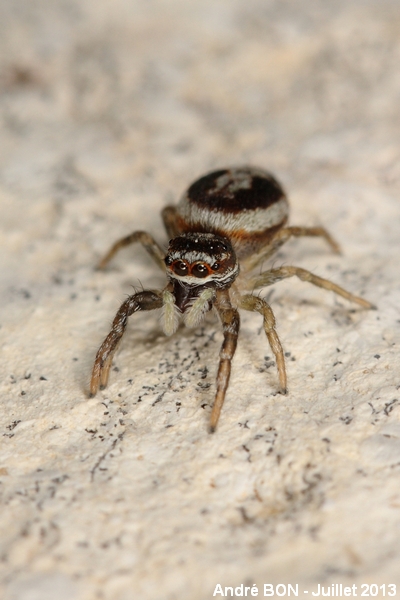
|
I think that this one is an immature female. I have listed it as Icius subinermis because of the important white pilosity below the frontal eyes. |
| [To know more about the Icius subinermis] [Next picture] [Previous picture] [Top] |
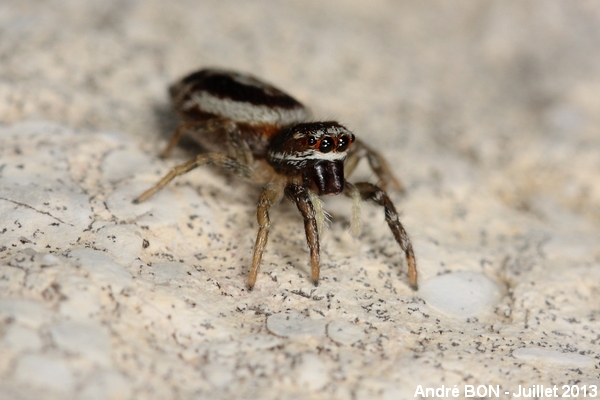
|
You can clearly see that the two fore legs are darker than the others. |
| [To know more about the Icius subinermis] [Next picture] [Previous picture] [Top] |
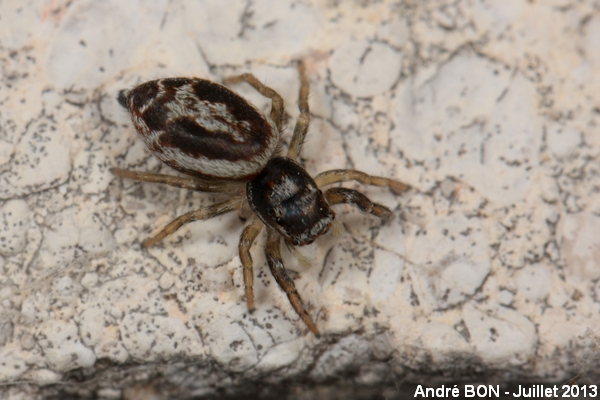
|
Seeing the markings on the abdomen of this immature jumping spider I would assign it bib number 2. |
| [To know more about the Icius subinermis] [Next picture] [Previous picture] [Top] |
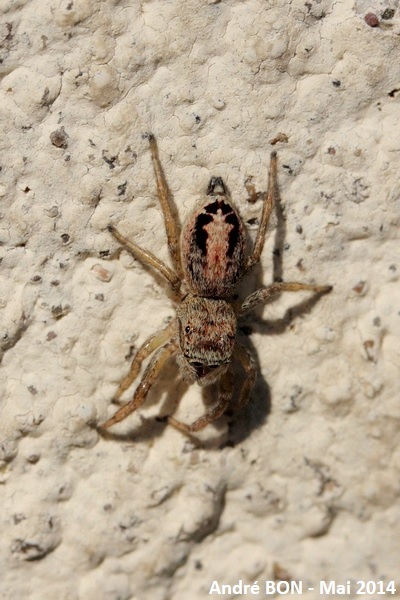
|
I have observed this female close to the place where I have done the above observation, that's to say on the rammed earth walls of an old farm. I have only listed this one as Icius sp. I hope that, one day, I will observe one mature male. |
| [To know more about the Icius subinermis] [Next picture] [Previous picture] [Top] |

|
Closer view. |
| [To know more about the Icius subinermis] [Next picture] [Previous picture] [Top] |
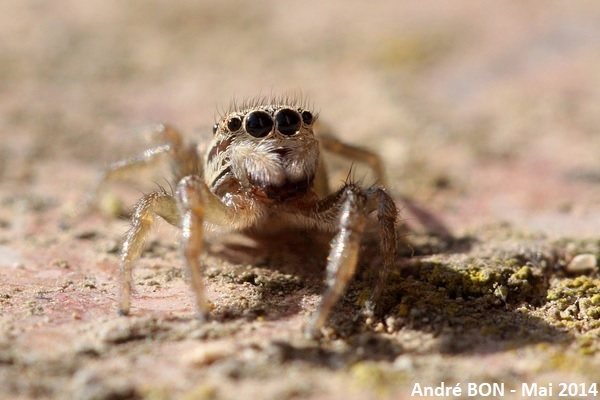
|
As for all the members of the jumping spider family I always try to shoot a front view. In this case it does not provide any key point for the species identification. |
| [To know more about the Icius subinermis] [Next picture] [Previous picture] [Top] |
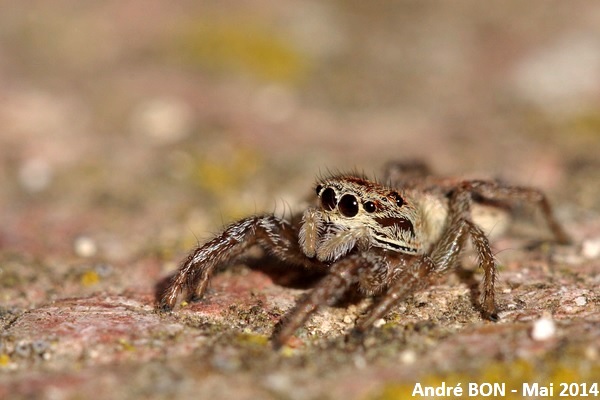
|
Three-quarter view. |
| [To know more about the Icius subinermis] [Next picture] [Previous picture] [Top] |

|
Another immature specimen near nests of solitary bees. |
| [To know more about the Icius subinermis] [Next picture] [Previous picture] [Top] |
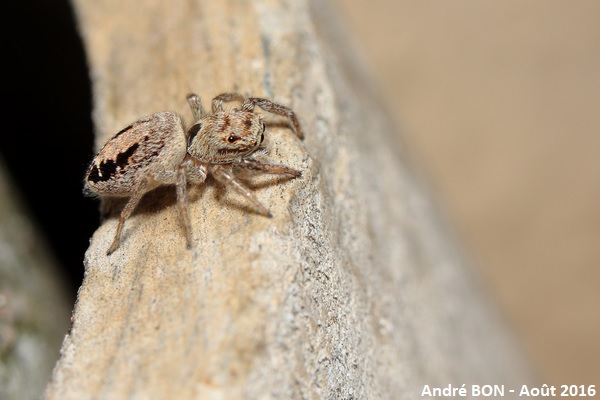
|
Another female again! |
| [To know more about the Icius subinermis] [Next picture] [Previous picture] [Top] |
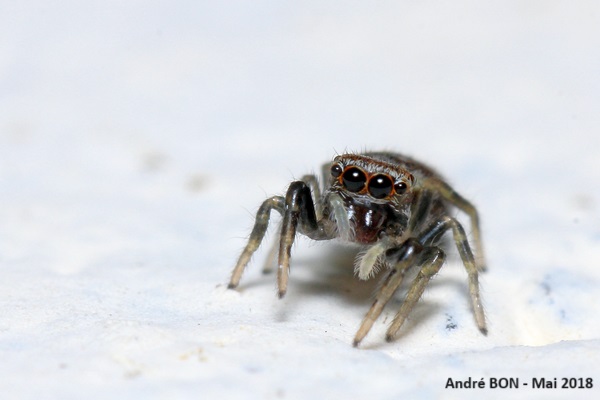
|
I never tire of photographing these little spiders. |
| [To know more about the Icius subinermis] [Next picture] [Previous picture] [Top] |

|
Here is a male and we do not see a continuous white band at the front of the abdomen but a distinctly orange area. I think this confirms Icius subinermis. All the previous Icius sp are therefore most likely Icius subinermis. |
| [To know more about the Icius subinermis] [Next picture] [Previous picture] [Top] |
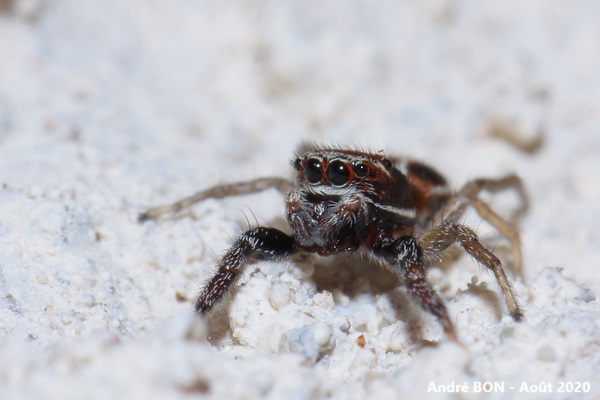
|
Front view. |
| [To know more about the Icius subinermis] [Next picture] [Previous picture] [Top] |

|
I searched for males for a long time to confirm the identification and now I observe them quite easily. This is certainly an indication of the expansion of the species. |
| [To know more about the Icius subinermis] [Previous picture] [Top] |
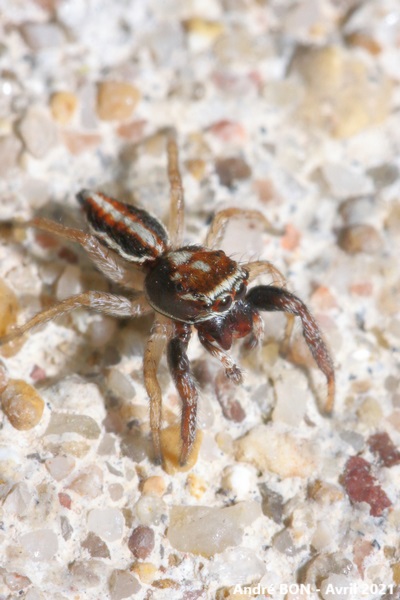
|
Another view of the same male. |